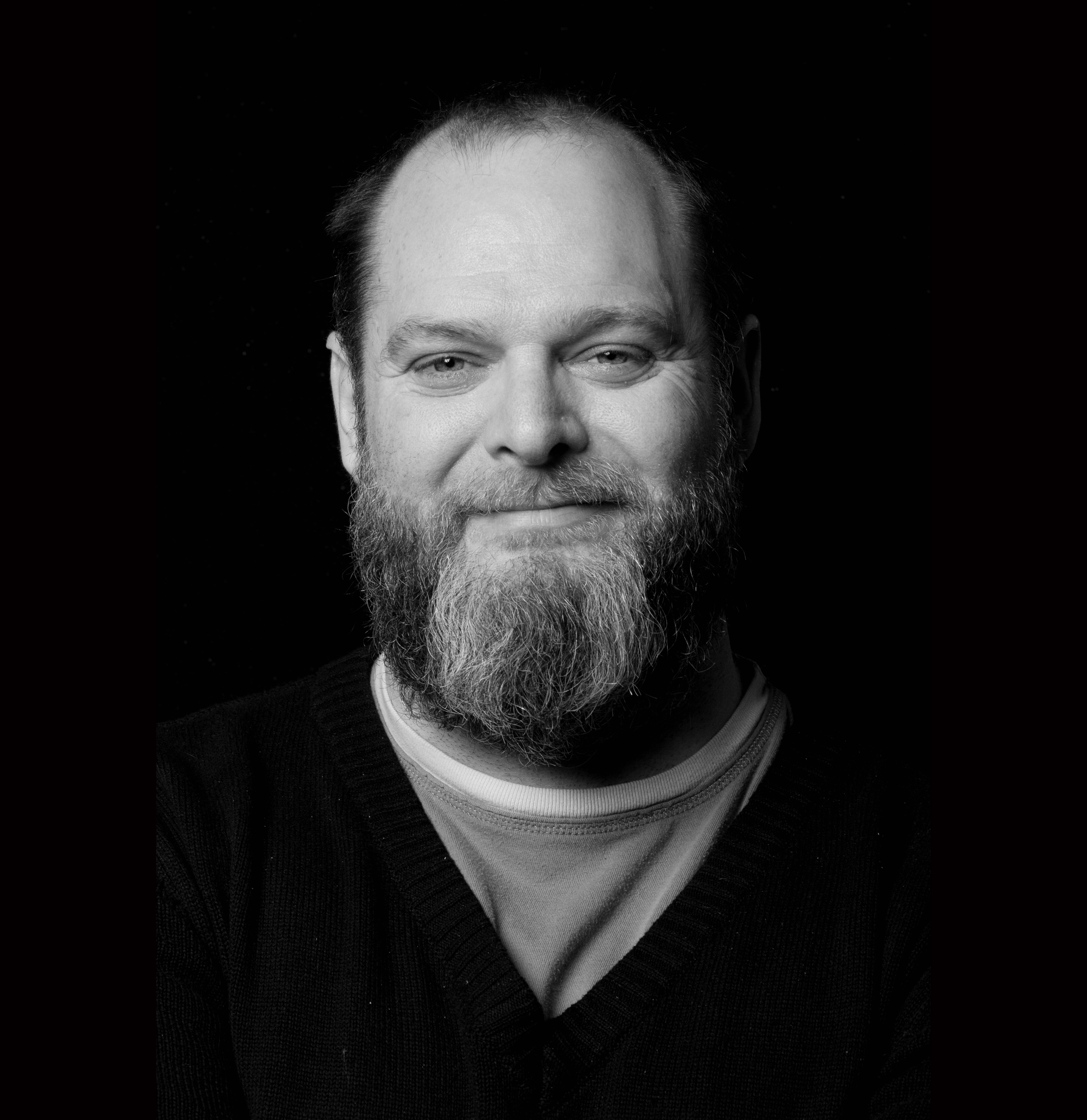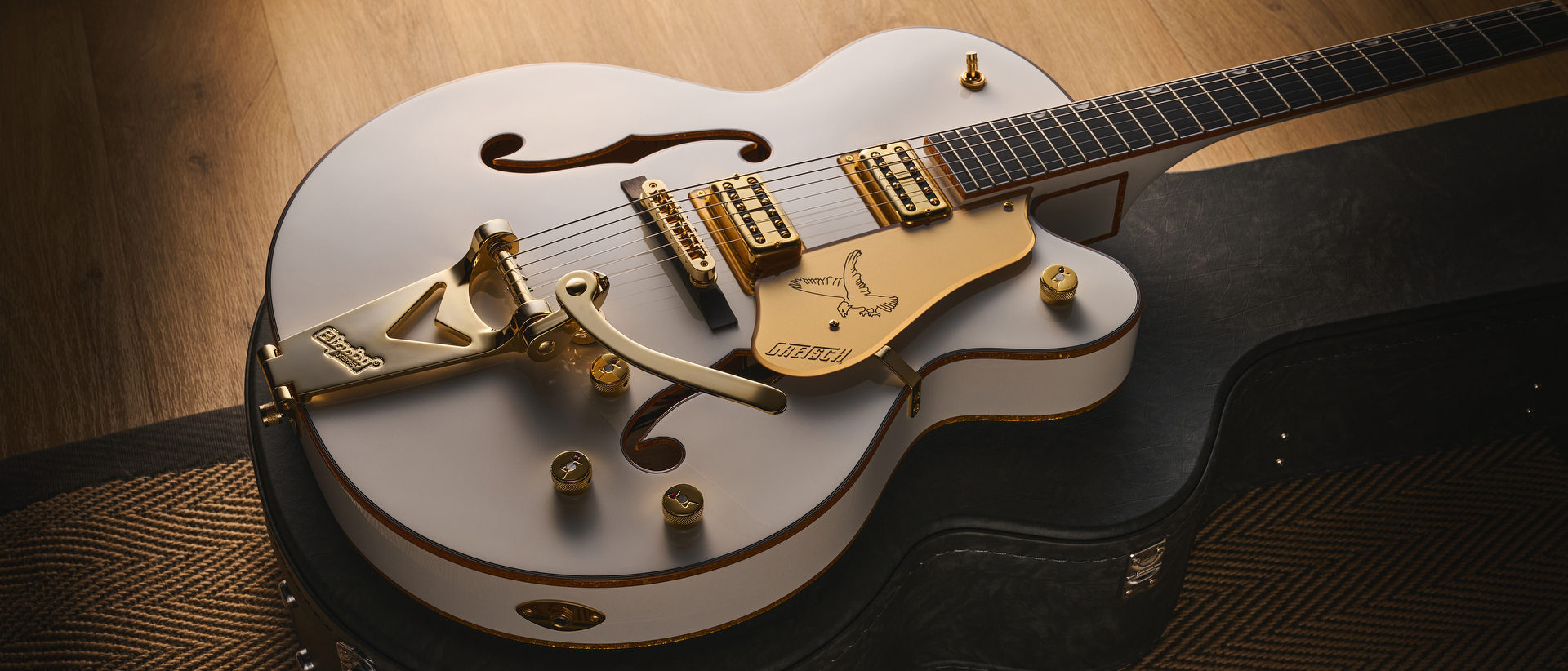“We were on at 10 a.m. We start playing, and nobody’s there yet. But by the time we got to the second or third song, there were thousands of people”: Disturbed's Dan Donegan on Ozzfest, the versatility of his ginormo-rig, and his migration to Schecter
Disturbed's riff-master talks songwriting, longevity, how Soundgarden and Alice in Chains informed his guitar playing, and how the band gradually made millions down with The Sickness
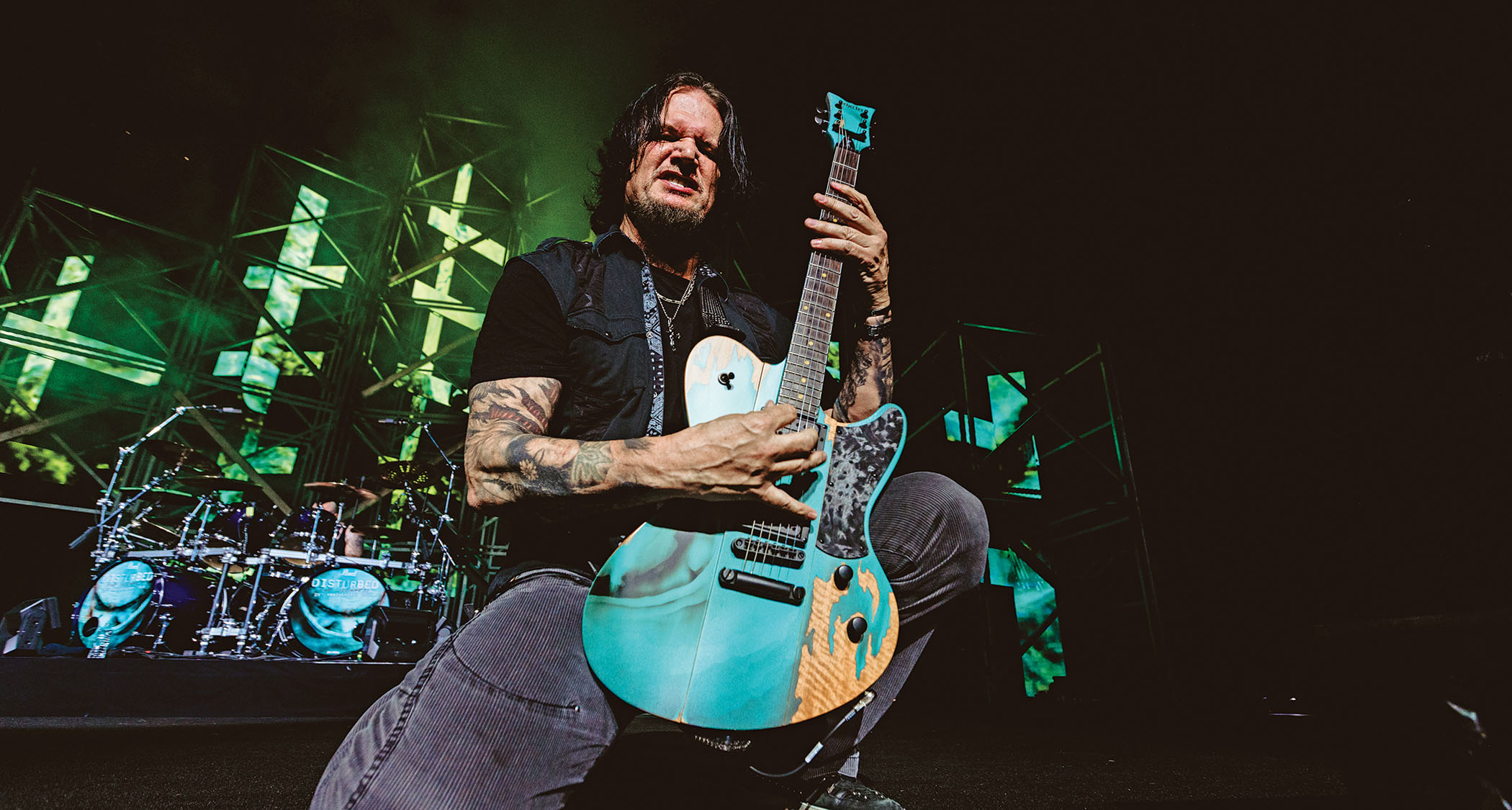
“Ooh-wah-ah-ah-ah-ah!” shouted Disturbed singer David Draiman in the intro of his band’s signature tune, Down with the Sickness, back in 2000.
Weird though it sounded at the time, millennial headbangers embraced the song in droves, ushering in a productive quarter-century for the Chicago quartet in which they have become one of the world’s biggest rock bands.
That track, its guitar parts delivered in a cabinet-busting drop C# tuning by Dan Donegan, was a highlight of their debut album, The Sickness, recently celebrated with a 25th-anniversary tour of North America.
Although Disturbed were initially bracketed with the nu-metal movement, the band – Draiman and Donegan plus bassist John Moyer and drummer Mike Wengren – later moved away from that sound, incorporating melodic solos and textural elements that gave their songs a virtuoso edge. Below, we ask Donegan to look back on his progression as a guitar player over 25 years of unsociably loud music.
How have you managed to keep the band going for so long?
“We’ve always been driven and focused, and we’ve stayed true to ourselves. We still have the hunger to perform, too. It’s like a drug to us, or an addiction, and it’s very therapeutic for us. Our music is what gets us through life.”
What are the challenges of running Disturbed in 2025?
All the latest guitar news, interviews, lessons, reviews, deals and more, direct to your inbox!
“It’s a business, so we have to strategize when it comes to the timing of things, or when we’re feeling ready to write a new album and put it out, and what markets we need to focus on. We try to make the right moves without doing anything that’s going to backfire on us. Fortunately, we have a good team of people in our management and our agents.”
Have you evolved as a guitarist over the last 25 years?
“I’d like to think that I’m continuing to grow. I’m always trying to inspire, and I’ve never cared about trying to meet any expectations from the record label or anybody else. I write what I feel, and I push myself, and I try to push the other guys to experiment and branch out a bit.
“As David and I are the songwriters of the band, I try to give him something that’s gonna inspire him, whether that’s on guitar or on a different instrument, such as piano when we did [a cover of Simon & Garfunkel’s] The Sound of Silence in 2015. We’re always challenging each other.”
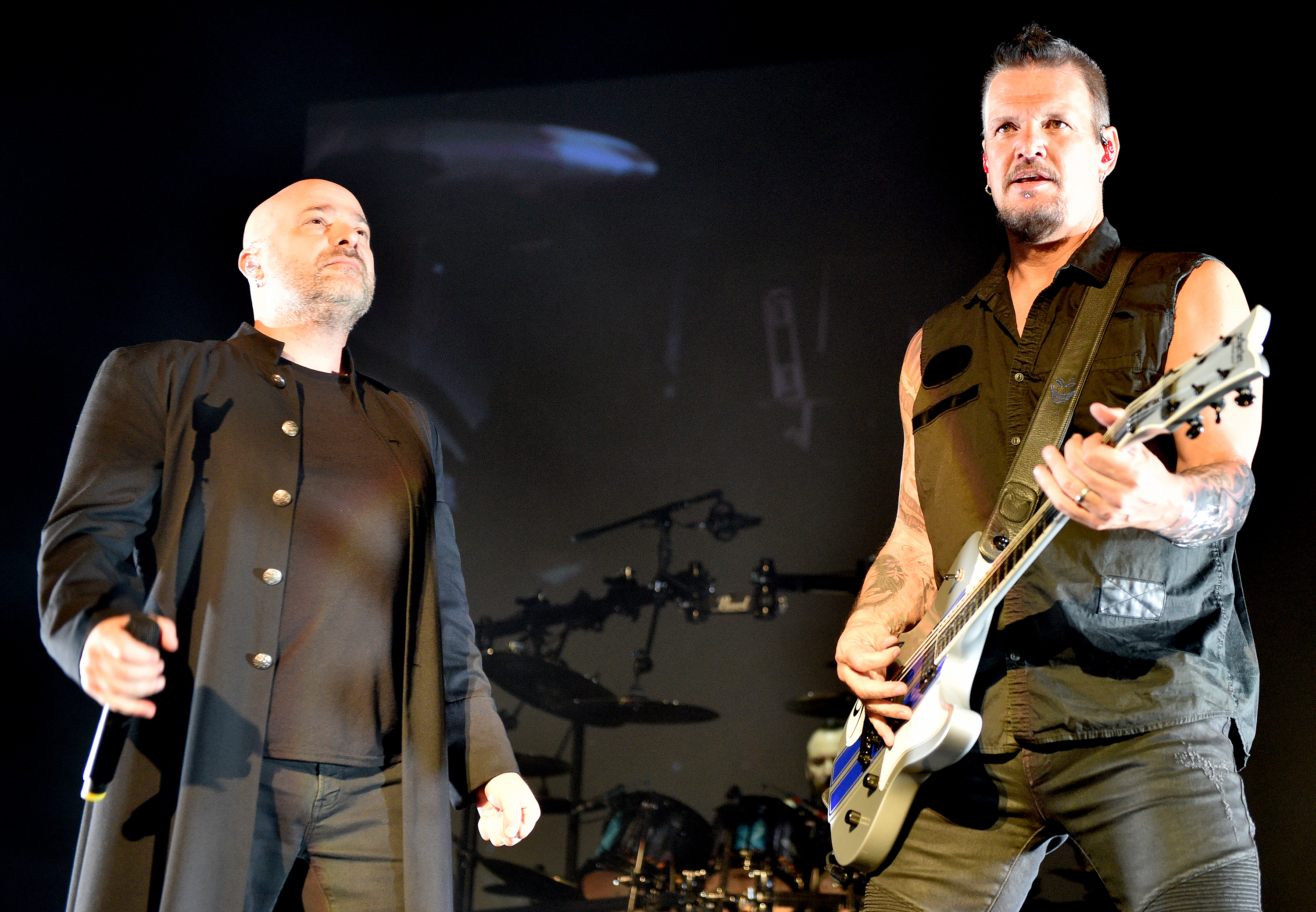
How has your playing changed?
“I’ve incorporated more solos into the songs over the years. That nu-metal phase that we were lumped into at the time, there wasn’t a whole lot of that going on. I was more in the school of bridges and riffs, like Soundgarden and Alice In Chains, even though they had some guitar solos here and there.
“But I’m a pretty melodic guy too, so I’d hear something like Jesus Christ Pose by Soundgarden and I’d listen to the musical journey they were going on. I loved Jerry Cantrell’s playing and how melodic he is in his solos, and that became the direction that I went in. It’s not about speed, although I add a little bit of that sometimes, or an arpeggio here and there. Mostly, I play with taste and melody.”
What’s in your guitar rack these days?
“I’ve been playing Schecter guitars for quite some time now. Originally I played Gibsons, and then I played Washburns for a number of years: they made me a signature guitar named after my daughter, Maya. I was with them for a number of years, but then there were some internal changes at Washburn and a lot of the guys I worked with left and went to other companies.
“The family kinda fell apart there, and then I was approached by Schecter, who I really liked. I knew the guys from Avenged Sevenfold and a few other bands were playing them, so I tried out the guitars. They wanted to make me a signature model, and we took it from there: we did a couple of different prototypes and hit on the one I really liked, and I’ve been with them ever since.”
How about guitar amps?
“I’ve had my rig pretty set for quite some time now. In the early stages of the band I was using a Mesa Boogie Triple Rectifier, and that was my go-to for a number of years. Later I assembled a pretty monstrous rig with my guitar tech, and we still use it to this day.
“It’s a combination of things: a Bogner XTC Ecstasy 20th Anniversary head, an EVH 5150 head that I’ve just incorporated into this tour, a Fractal rack, and a Kemper rack, so I’ve got four different things going on there. It has quite the tone, and we’re very happy with it.”
Why use such a complex rig?
“It’s so my sound guy has options for blending whatever he chooses out front. We mainly use the Kemper for a direct feed for our in-ear monitors: it’s a cleaner tone that’s easier for David to sing to. I mainly use the Fractal for some of the effects that it has in it.
“I have some other effects on my pedalboard: a DigiTech Whammy and then a wah – I have the Cry Baby rackmount and the expression pedal out front on my board. My channel-switching is MIDI, so when we’re doing big stages I don’t have to run from one side to the other to get to the pedalboard. It’s very convenient.”
You’ve evolved a very tight, palm-muted picking style.
“It’s all about syncopation. I like things locking in and being rhythmic with our drummer when he’s playing certain double-kick patterns. My tone is pretty tight: it’s not oversaturated, it’s easy to control, and with those palm-mutes I can be rhythmic with it.”
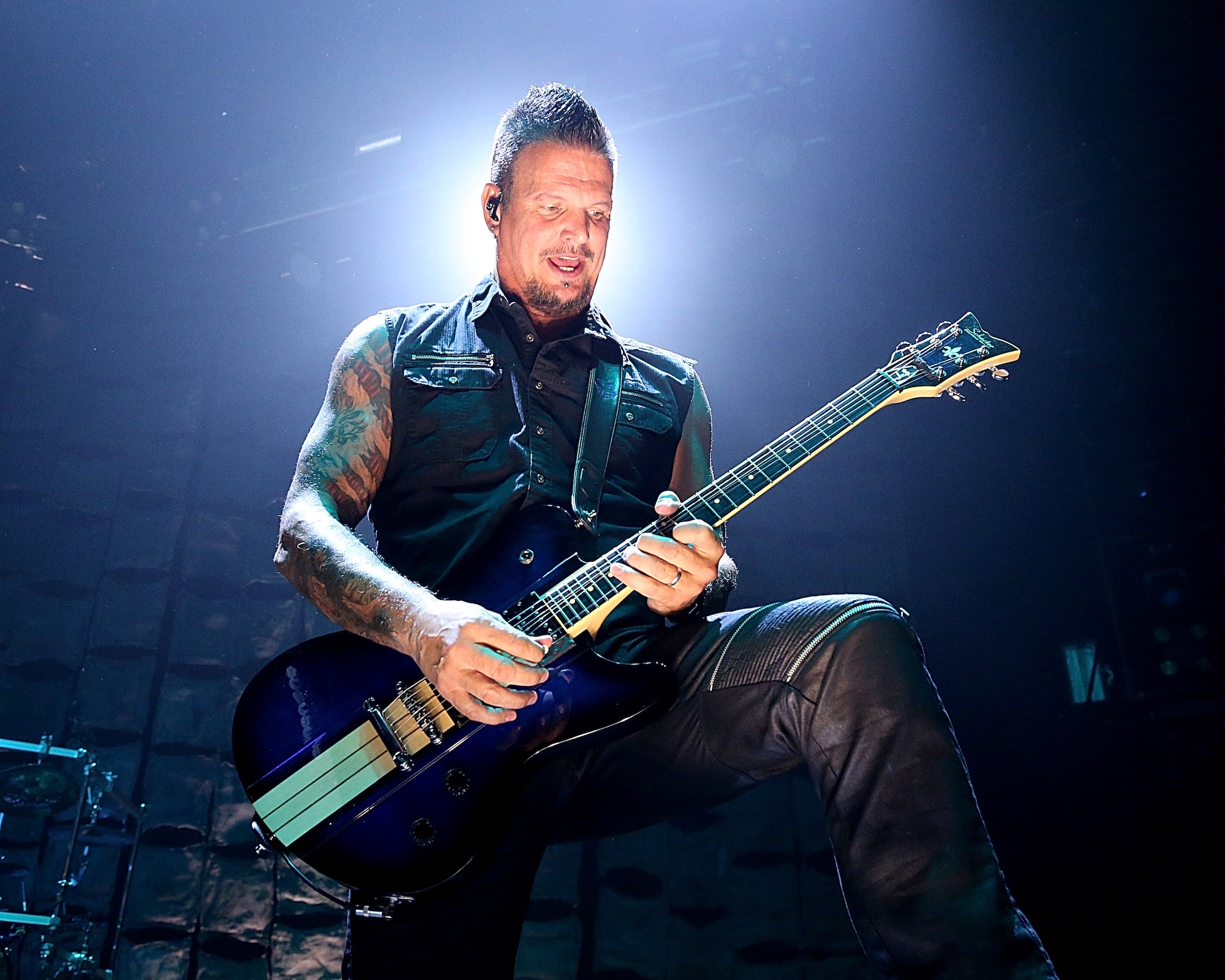
Name a couple of cool Disturbed riffs we should listen to.
“Stupify, which was our first single off of The Sickness, has that chunkiness, and toward the end of the song there are a couple of moments with those palm-mutes. It was written early on, when we first became a band in 1996, and it was one of those songs that came together real good.
There have been so many high points. One that comes to mind is when we got the call from Sharon Osbourne to do Ozzfest 2000 in the States and Canada
“I love what David did with it, vocally, and we’ve played that song our whole career. I don’t think there’s ever been a show where we haven’t played it. I also like the vibe and the feel of the bridge in Voices, another track on The Sickness. If that was the very first thing people heard by us, it would be a good introduction to what we do.”
What have been the high points of the last 25 years?
“There have been so many high points. One that comes to mind is when we got the call from Sharon Osbourne to do Ozzfest 2000 in the States and Canada. We’d been going to Ozzfest since the mid-Nineties, so we knew what an opportunity it was that Sharon and Ozzy provided for new bands. We also knew it would be a chance to be put in front of big audiences, five days a week or whatever it was, and really go out there and make our mark.”
Did the Ozzfest crowds understand what Disturbed were about?
“They did, but it didn’t happen overnight; it was a steady climb, gradually going upward. I’ll never forget – our first show was in West Palm Beach in Florida, and we were the first band to open the second stage, which was basically a stage set up in the parking lot. There were so many good bands coming out at that time, so there was this friendly competition, with everybody trying to leave their mark.
“We were on at 10 in the morning, so we were like, ‘Is anybody even gonna show up?’ Sure enough, we start playing at 10 a.m. and nobody’s there yet. The festival people said, ‘They’re coming in, don’t worry about it,’ and by the time we got to the second or third song, there were thousands of people watching us. It was great exposure, and it really helped launch our career.”
It’s been 25 years well spent, then?
“We’re still going strong, and we feel like we still have a lot left in the tank. It’s been quite the journey, from playing small bars in the suburbs of Chicago to playing a sold-out show at Madison Square Garden on our last tour. We definitely have to pinch ourselves.”
- Disturbed's ‘The Sickness’ 25th Anniversary Tour visits the UK and Europe this October. See Disturbed for dates and ticket details
- This article first appeared in Guitar World. Subscribe and save.
Joel McIver was the Editor of Bass Player magazine from 2018 to 2022, having spent six years before that editing Bass Guitar magazine. A journalist with 25 years' experience in the music field, he's also the author of 35 books, a couple of bestsellers among them. He regularly appears on podcasts, radio and TV.
You must confirm your public display name before commenting
Please logout and then login again, you will then be prompted to enter your display name.



